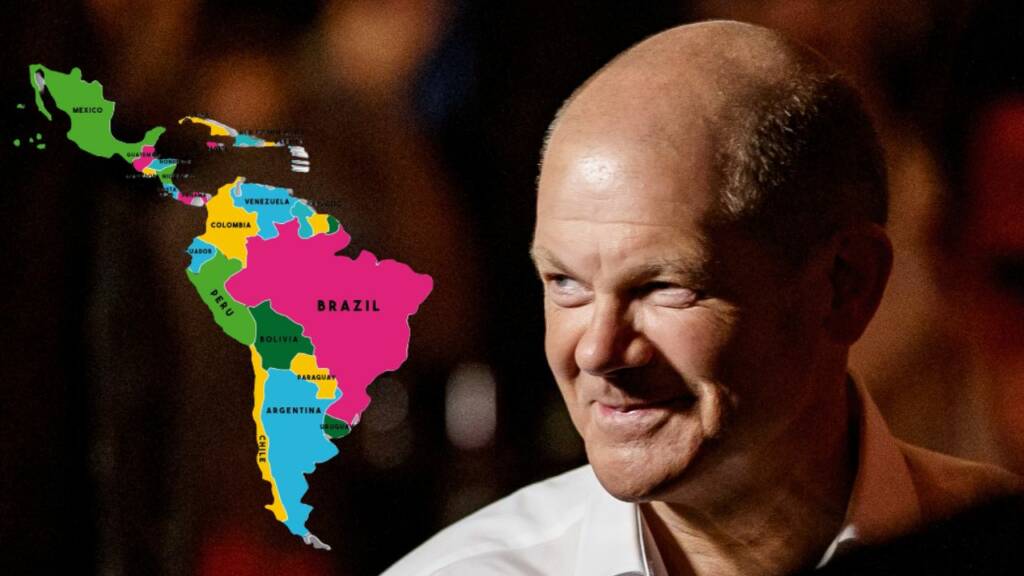Latin America has become a prime destination for investors across the globe, owing to it vast deposits of natural resources. Like vultures descending on a prey, the World’s fourth largest economy, Germany is now also eying South America.
German Chancellor Olaf Scholz is on a trip to the continent.
But what’s his trip about? What can Germany gain out of the region?
Underlying Motives
German Chancellor Olaf Scholz is travelling to South America for the first time this weekend, starting in Argentina. Scholz will visit will last three days; touring the South America top three economies, Argentina, Chile, and Brazil.
On the agenda for Scholz’s meetings with regional leaders is a free trade pact between the European Union and the South America trading group Mercosur. The free trade agreement between the EU and Mercosur, which was in principle agreed upon in 2019, was halted after the alleged rapid loss of the Amazon rainforest by EU ambassadors. The agenda also inludes Germany’s proposal for the protection of environment and resources of these nations against mining, deforestation etc.
Read More: Is a common Latin American Currency feasible?
On the surface, the visit is depicted to be purely based on economic partnership and environment protection. In reality, visit’s agenda is driven by the self-interests of a few.
But whose interests exactly?
As Germany takes on the enormous task of decoupling from Russia, Latin America seems a like a viable option. From the economic benefits of trading with the region to exploiting its rich natural resources, Germany can benefit in a immensely from investing in Latin America.
First and foremost, South America is rich in minerals. Due to its abundant resources and cost-effective mining operations, Latin America is an attractive option for Germany’s mineral needs. Germany whose economy heavily depends on the automobile sector faces danger from the transition to electric vehicles. The country is now looking to Latin America to source its lithium needs.
It is important to mention here that Lithium is a key element in the production of electric vehicle batteries. Thus, making it vital to the development of a green economy. Most of the world’s lithium is currently sourced from Chile and Argentina. And Germany plans to source it.
Read More: It’s time for Argentina and Chile to claim Antarctica as their backyard
Further, the region is a growing market for German exports, and as the economies of Latin American countries become more integrated with the global market, the potential for increased trade is significant. Germany is already among the largest investor in Latin America, and with the right policies and measures in place, the region could become an even larger market for German products and services.
Chinese involvement?
There are also speculation that Olaf Scholz may be on China’s mission. Scholz is infamous for China-dove policies. Just recently, Bolivia chose a group to explore its mainly undeveloped lithium riches, which includes CATL, a major player in the Chinese battery industry.
Germany stands to benefit significantly from a strong relationship with Latin America. From increased trade opportunities to the cultural exchange between the two regions, Germany can reap the rewards of investing in Latin America. The speculation about Chinese involvement makes his visit more intriguing.
But, Germany’s leader visit shows the increasing importance of the Latin America and its potential to shape the future of the world. It is thus, important for the nations to see the visit for what it is.
